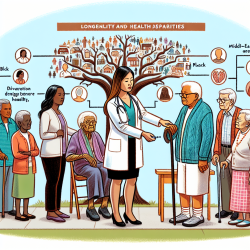The field of special education is constantly evolving, with new research shedding light on complex disorders that affect students' learning and development. One such disorder is RARS1-related hypomyelinating leukodystrophy (HLD-9), a genetic condition that presents significant challenges for educators and therapists alike. Understanding the intricacies of this disorder can empower practitioners to enhance their skills and provide more effective support to affected individuals.
Understanding RARS1-Related HLD-9
Hypomyelinating leukodystrophy-9 (HLD-9) is caused by biallelic pathogenic variants in the RARS1 gene, which encodes the cytoplasmic tRNA synthetase for arginine (ArgRS). This genetic anomaly leads to a decrease in ArgRS activity, resulting in a spectrum of symptoms ranging from severe early-onset epileptic encephalopathy with brain atrophy to milder conditions with relatively maintained myelination. Common symptoms include hypomyelination, language delay, and intellectual or developmental delays.
Key Findings from Recent Research
A recent study conducted by Biglari et al. (2024) focused on evaluating the clinical, neuroradiological, and genetic characteristics of patients with RARS1-related disease. The study identified three patients with homozygous pathogenic variants of RARS1 in Iran and reviewed 30 other cases from eight studies. The main symptoms observed were consistent across these cases, with an average age of onset at 5.8 months.
- The study highlighted the pathogenicity of the variation c.2T>C (p.Met1Thr), which has been shown to significantly impact ArgRS activity.
- The research emphasized the importance of early diagnosis and intervention to manage symptoms effectively.
- The variability in symptom severity underscores the need for personalized therapeutic approaches tailored to each patient's unique presentation.
Implications for Practitioners
For practitioners in the field of special education and therapy services, understanding the nuances of RARS1-related HLD-9 is crucial for developing effective intervention strategies. Here are some ways practitioners can leverage this knowledge:
- Early Intervention: Recognizing early signs of HLD-9 can lead to timely interventions that may mitigate some developmental delays.
- Personalized Therapy Plans: Given the variability in symptom severity, customizing therapy plans to address individual needs is essential.
- Collaborative Approach: Working closely with geneticists and neurologists can provide a comprehensive understanding of each case, leading to more holistic care.
- Continuous Learning: Staying informed about ongoing research and advancements in genetic therapies can enhance a practitioner's ability to support affected students effectively.
Encouraging Further Research
The findings from this study not only provide valuable insights but also highlight areas where further research is needed. Understanding genotype-phenotype relationships more deeply could lead to breakthroughs in treatment options. Practitioners are encouraged to engage with current research and contribute to ongoing studies that aim to unravel the complexities of genetic disorders like HLD-9.
To read the original research paper, please follow this link: RARS1-related hypomyelinating leukodystrophy-9 (HLD-9) in two distinct Iranian families: Case report and literature review.










